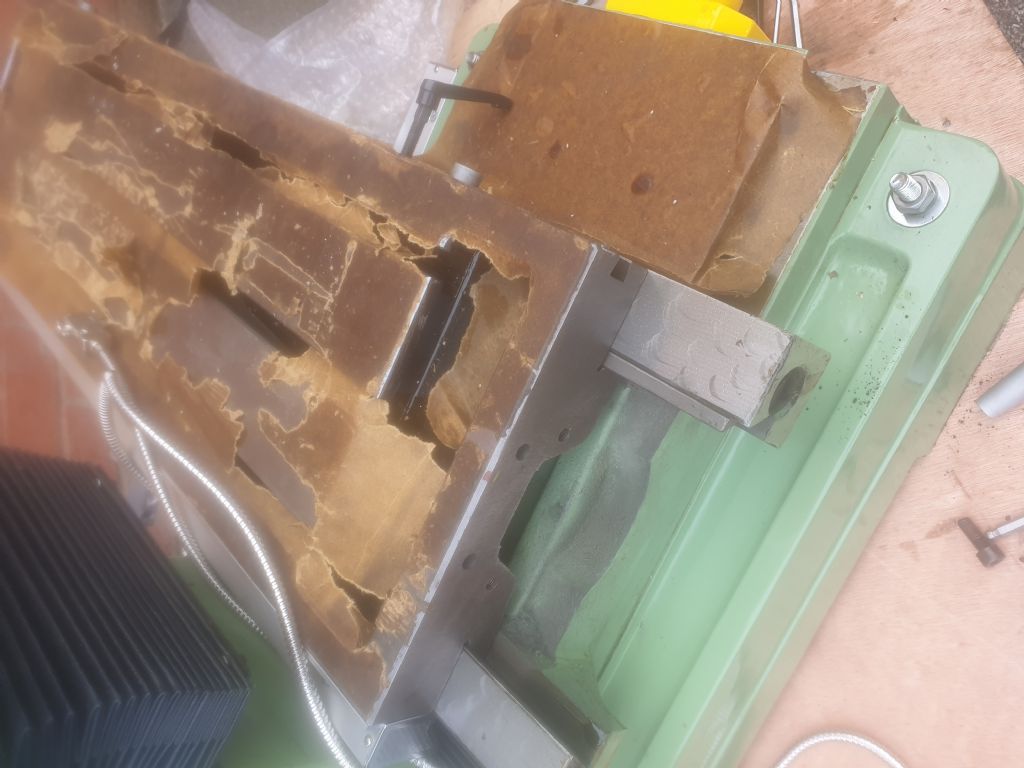Without actually seeing the obstacles you face, or the room for manoeuvre you have, I can only describe my own situation (which doesn't include steps) and how I overcame the problems I faced. If you can take some ideas from from my methods that would be the most assistance I could offer. (For the steps I can only suggest jacking the machine up level on blocks and barring it forward to the next step in stages).
My property sits at the top of a fairly steep drive. It plateaus out across the front of the house but the parking area is still on the cant. The workshop is a further 25 metres away at the back of the garden/lawn which is on an incline all the way up. For the smaller machines I have, i.e. a Boxford shaper and a Q&S hacksaw, I had lifted them out of a van with the aid of a light portable A-frame and chain block at the top of the drive but lowered them on to a pallet. I had acquired an old pallet truck in a local auction for £35 with the idea this would be useful for shifting machines By putting two old sheets of plywood on the grass I was able to drag each machine up to the workshop by dropping the pallet to stop it rolling back and placing the previous sheet of plywood in front for the next drag. When at the workshop, I was able to lift and lower the machines on to 1" round stock rollers and lever them into position.
But the main problem came when faced with moving a Colchester Student and J&S 540 surface grinder up there after delivery to the bottom of the drive by the machine moving haulage company whose Hiabb wagon wouldn't fit up the drive. As the drive and grass are contiguous and quite wide, I had to pay a local farmer to bring his Teleporter over to move the heavier machines up to the workshop by slinging the machines under the tines and driving up to the workshop. Again rollers and pallet truck got them into their final resting place.
This was all over twenty years ago now and time has taken its toll on my physical abilities since, sadly, so I have been given the most sternest of warnings by my wife that I must not shuffle off this mortal coil before her, at least not before shifting those 'damned machines' out and leaving her with the problem!
May I add this word of caution, but you probably know anyway, that machines on the move are notoriously unstable and can easily topple being mostly top heavy with a relatively narrow base. That is the reason I strapped them to a pallet to broaden the footprint rather than having the pallet truck directly under them. I learnt the hard way at a previous property with a Tom Senior M1. It was stood directly on to a then borrowed pallet truck and seemed to be stable enough on a level concrete path when myself and couple of assistants stepped away from it to accept some tea the wife had just made. As we were looking at it and discussing the next move it just sort of fell over side-wards tipping the pallet truck with it. Fortunately, it hit a wooden panel fence on its way down, breaking a couple of fence posts, so it was sort of reasonably gently lowered to the ground and landed on the neighbour's flowerbed, preventing any bent screws or cracked castings but which prompted profuse apologies and offers of compensation and repairs from myself to keep the peace. We had to haul it upright again with the A-frame and chain block.
Jak2g.





